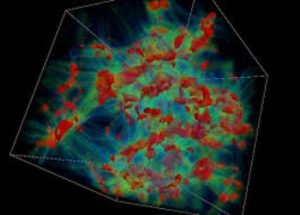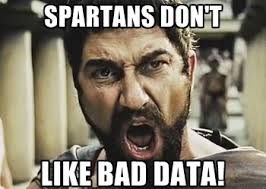Every year, the amount of data created grows almost exponentially. So much so, that by 2015 the global annual rate of data production had exceeded five and a half zettabytes. This data is of no use on its own however, to be beneficial to anyone it needs to be gathered, organized, made interpretable, and then analyzed and acted upon to provide meaningful insights and value.
Writing for Data Informed, Brian Gentile argues that for highly informed decisions to happen, organizational leaders need to be able to access and interpret data in real time. The ability to quickly act on and identify insights within information has become a competitive differentiator. As such, he offers the five biggest benefits in data visualization.
 1. Organizations that use visual forms of data discovery are more likely to find the information they need, and to find it when they need it. Surveys have found that organizations using visual data discovery tools are 28% more likely to find timely information than those still relying on managed reporting and dashboards. Furthermore, 48% of users were able to find the information needed without the help of IT staff.
1. Organizations that use visual forms of data discovery are more likely to find the information they need, and to find it when they need it. Surveys have found that organizations using visual data discovery tools are 28% more likely to find timely information than those still relying on managed reporting and dashboards. Furthermore, 48% of users were able to find the information needed without the help of IT staff.
2. Data visualization can enable users to see connections more effectively as they occur between operating conditions and business performance. In the highly competitive, modern business environment, finding these connections and correlations has never been more important. Spotting these quickly can enable business executives to identify the causes and act quickly to resolve any issues.
3. By using data visualizations, organizations can swiftly spot shifts in customer behaviors and market conditions over several data sets in time to act upon them and take advantage of a quickly changing market. More importantly, wielding this level of insight enables a company to act on new business opportunities ahead of the competition.
4. Data visualization’s greatest strength comes, arguably, from the way it can bring actionable insights to the surface. Unlike with charts and tables, visualization tools allow the user to interact with and directly manipulate the data sets. This level of interaction allows executives to ask further questions about the data, not just the what, but also the why, how, and where.
5. The final advantage of data visualizations over one-dimensional reporting is the ability to foster a new business language. Adding a narrative to the data can show more than just traditional KPIs like EBITDA and net profit margins. Engaging the executives can open up brand new ways of looking at business and operational data. This allows a much broader audience, bringing new insights and fresh eyes to old data sets.
Big Data and related technologies – from data warehousing to analytics and business intelligence (BI) – are transforming the business world. Big Data is not simply big: Gartner defines it as “high-volume, high-velocity and high-variety information assets.” Managing these assets to generate the fourth “V” – value – is a challenge. Many excellent solutions are on the market, but they must be matched to specific needs. At GRT Corporation our focus is on providing value to the business customer.
The Breaches We Don’t Know About
Stories of major data breaches continue to roll in. One victim announced during the spring was hard drive maker LaCie...



